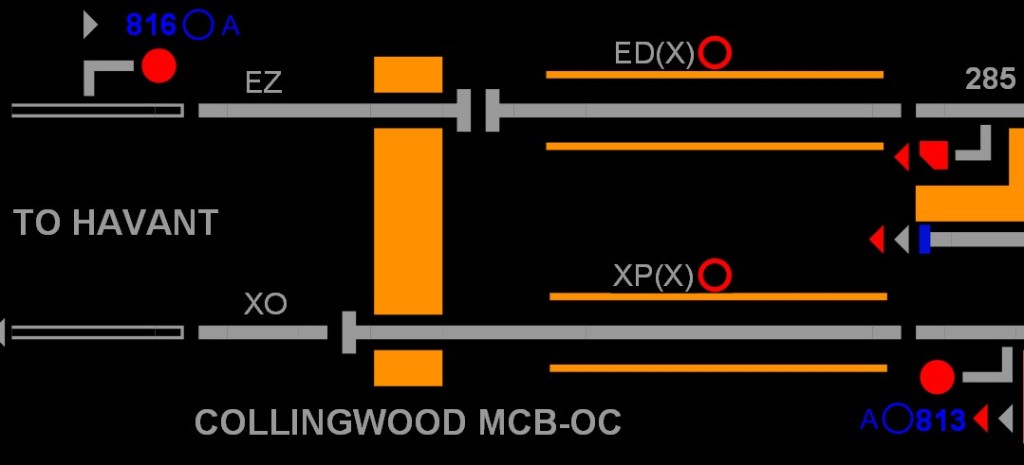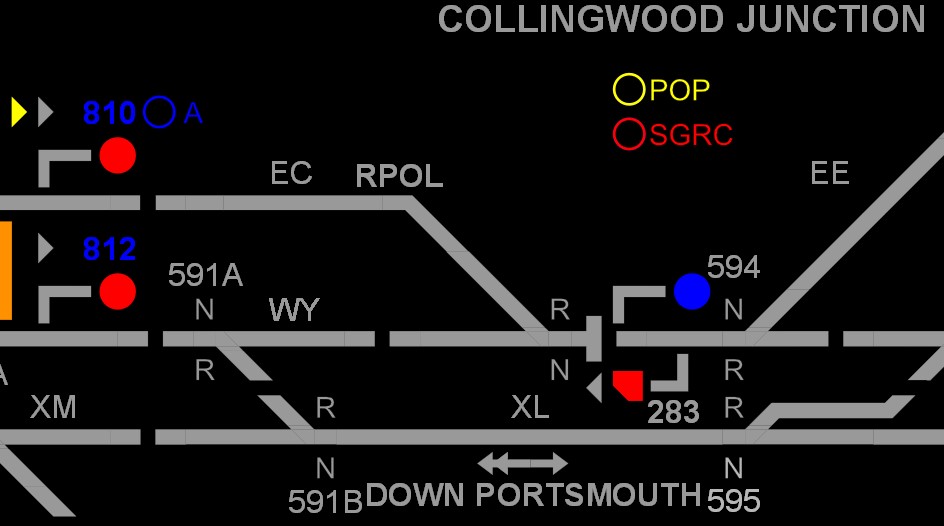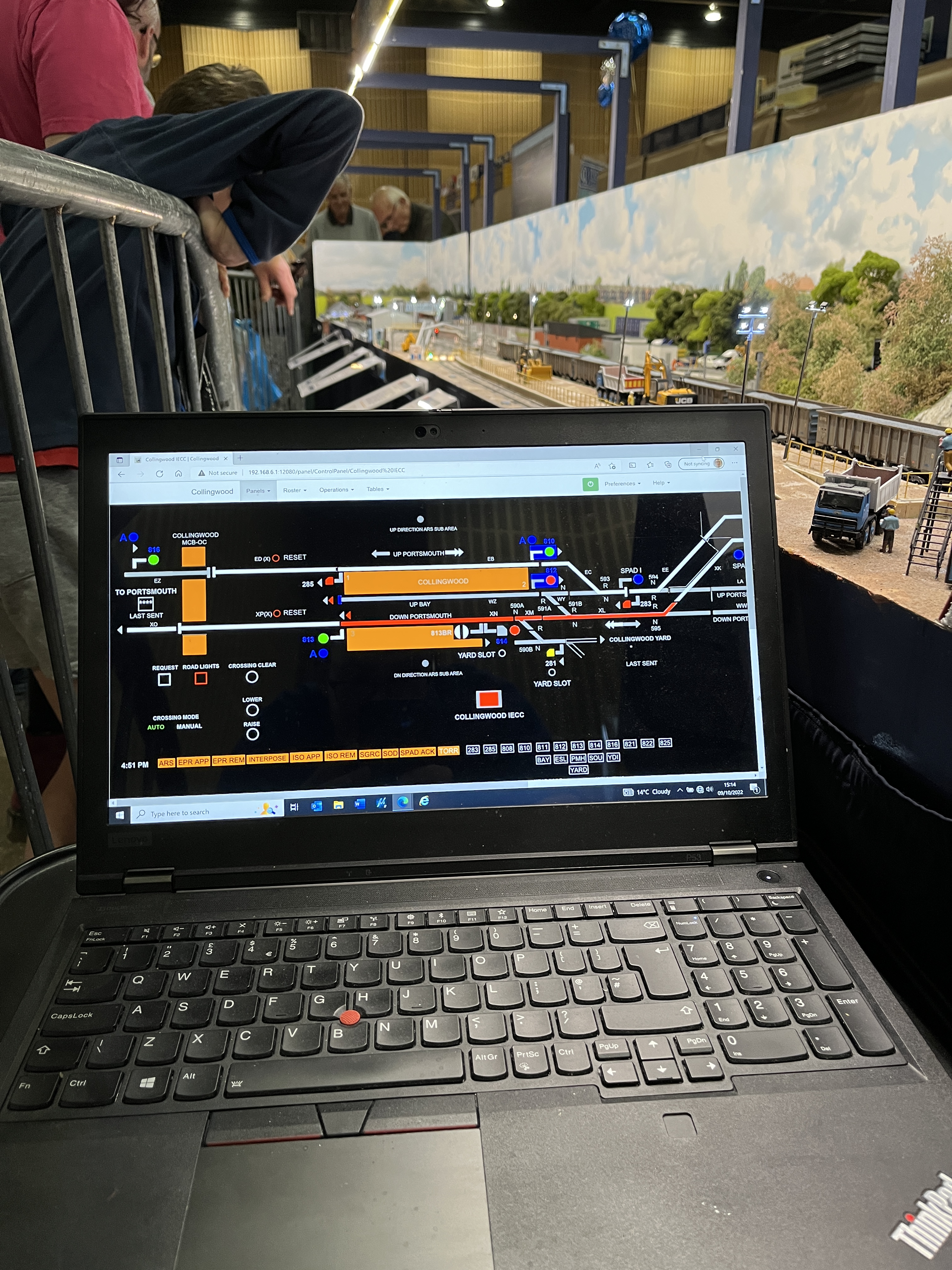Overlaps seem to be something which is often just stated when talking about signalling for model railways, often quoting the distance of 180m. The reality of overlaps is quite a lot more complicated and varied.
The concept of an Overlap is simple, it is a section of track beyond the exit signal of a route that is proved to be unoccupied to prevent a collision in the event of a minor overrun as the result of a SPAD.
Not all signals require any overlap, the basic rules being that an Overlap is not required when you don’t have a signalled route up to a signal, the signal is on a freight only line and doesn’t protect a passenger conflict, where a permissive move is being made or for Buffer Stops.
Currently, there are several types:
Unrestricted Overlap (OL)
This is your common or garden overlap in Track Circuit Block Operation, the standard length for a standard overlap used to be 180m (or 183yds), however, the standards have since changed.
The previous standards only allowed the reduction in length of an Overlap from 180m to be permitted if a risk assessment had been undertaken. However, the standard is now that 180m is the ‘target length’ of an overlap and the overlap length can be reduced quite happily down to a minimum length based on the approach speed.
The absolute minim for an overlap is 45m for a 15mph line, with 180m being the minimum for 90mph and above lines, although for 75mph and higher lines, additional TPWS is required to justify the shorter overlaps.

Restricted Overlap (ROL)
A Restricted Overlap is used where you wish to have a conflict within the Unrestricted Overlap, such as a conflicting route or a train, but you still wish to draw a train up to a signal. There are used in association with a Warner Route.
The difference that a ROL makes in the interlocking is that it delays the aspect release of the route entry signal to make sure that the train is under control as it pulls up to the route exit signal, to reduce the chance that any SPAD will result in an overrun greater than the length of the ROL.
ROLs will start to become less common with the relaxation of the OL length rules, meaning that normal Overlaps can be shortened to remove any conflicts that you might require a ROL for.
Swinging Overlap
A swinging overlap is where there is an Overlap provided each way over a facing point. These are mostly found in junctions where a signal is very close to the toes of the points, allowing the overlap to swing to another position allows conflicting routes to be set up safely. This is mostly done automatically when setting routes.
The controls for a swinging overlap can be very complex and because of this, they are being discouraged for new works. In the interlocking, to allow an overlap to swing, the ‘alternative’ overlap must be available and free of trains and it must be ensured that there is time for the points controlling the swinging overlap to unlock, move and lock up again before a train arrives at the exit signal (this is known as ‘time of operation locking’).
Non-Called Overlap (NC OL)
A Non-Called Overlaps is a new type of Overlap and is a sort of ‘Swinging Overlap’.
In the case of a ‘Non-Called’ Overlap, it is only used either when the forward route is set from the exit signal or where the signaller chooses to swing the points manually. This is to prevent an ‘undesirable’ overlap being set and locking a junction up.
On Collingwood, I have an NC Overlap for CD822 over 596 points reverse. This means that the route up to CD822 will always call 596 points normal and have the overlap through the trap points unless either CD822 A(M) route is set towards Eastleigh or the signaller manually selects the NC overlap, this prevent such a move locking 596 points reverse most of the time so that a train can come from Eastleigh into Collingwood.
Phantom Overlap / Restricted Phantom Overlap (POL / RPOL)
A Phantom Overlap is where an overlap ends where there isn’t an insulated rail joint or axle counter head and isn’t preferred or feasible to provide a joint or head. They are mostly found in track circuited areas as it is more difficult to cut in rail joints compared with providing an additional axle counter. You can have Phantom version of all the overlaps
Phantom Overlaps are most useful in junctions as they allow an overlap to be provided clear of a clearance point within a junction. I have provided one for the Restricted Overlap for CD816 A(W) route, clear of 593 Clearance Point without the need for me to go back and cut in a new track circuit joint that I didn’t have when I first built the layout.

In terms of controls, a Phantom Overlap isn’t that much different, the only difference being that the aspect controls for CD816 A(W) is ‘EC Occupied or 593 Normal’ to avoid a train leaving the bay (and thus occupying ‘EC’ Track Circuit) from preventing a caution aspect on CD816. The theory being that ‘EC’ Track Circuit had to be clear to call 593 Points normal and thus no train could be standing on the ‘reverse leg’ of the point.

